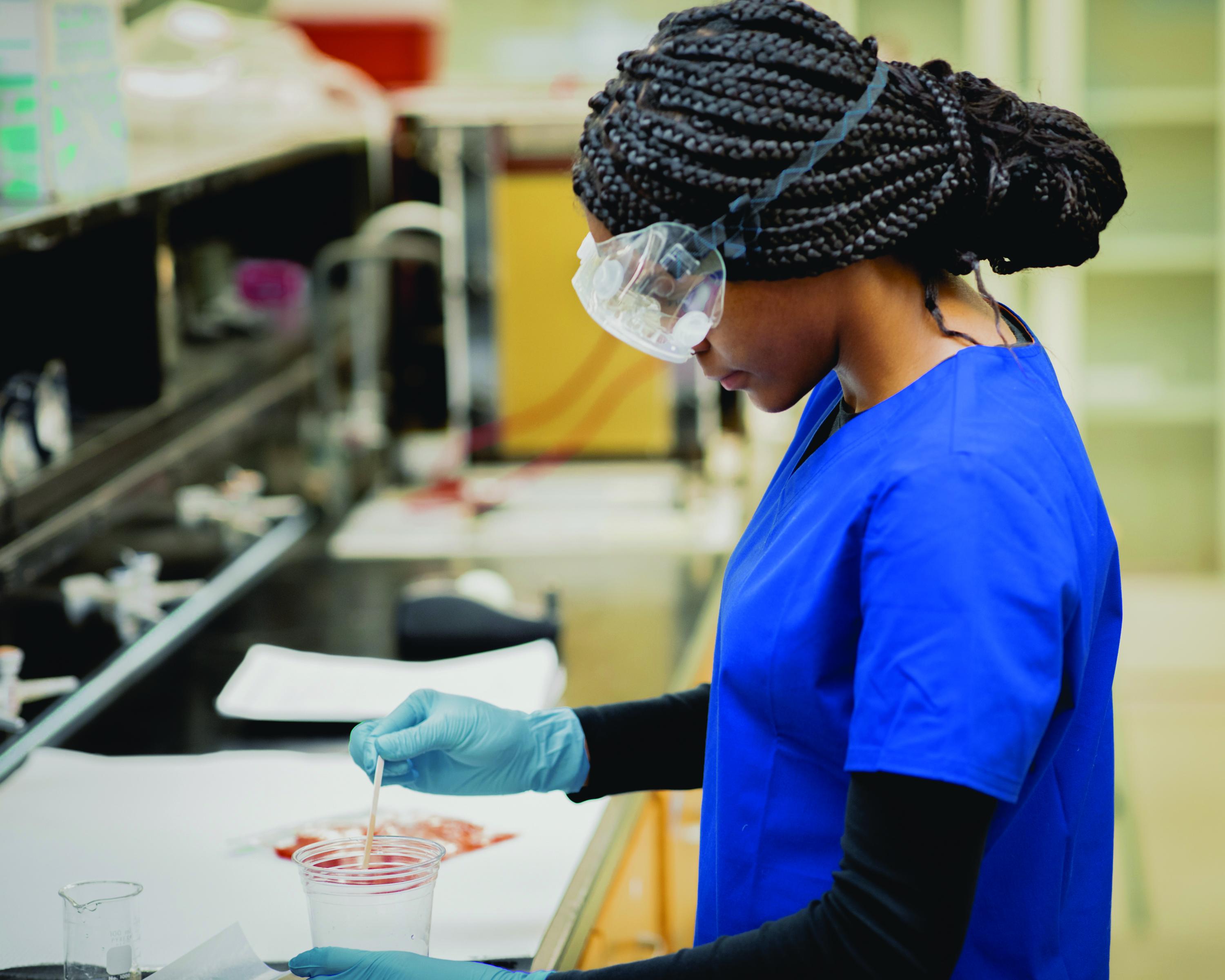This Living Learning Program gives freshmen a mentored head start on the way to majoring in the sciences and mathematics
By Richard LeComte
 Started in 2015, the STEMCats Living Learning Program has helped students majoring within the many and varied areas of the sciences or mathematics find their way to success at UK. And STEMCats peer mentors are a big part of that effort.
Started in 2015, the STEMCats Living Learning Program has helped students majoring within the many and varied areas of the sciences or mathematics find their way to success at UK. And STEMCats peer mentors are a big part of that effort.
“I have a group chat with my mentees about how things are going,” said Keanu Exum, a STEMCats peer mentor majoring in biology and neuroscience. “I want to make myself known to my mentees — that I am a resource for them.”
Getting students situated in STEMCats is having a positive effect on the academic careers of the participants, says a study conducted by Carol D. Hanley of International Programs in the College of Agriculture, Food and Environment. STEMCats is a program for first-year students who intend to study such fields as biology, chemistry, geological sciences, math, neuroscience or physics.
In 2014, UK received a $1.9 million grant by the Howard Hughes Medical Institute to improve retention of students in the STEM disciplines of science, technology, engineering and mathematics.
- Students spend their first year living in the heart of campus taking part in several key activities and services:
- FastTrack, a week-long program that allows students to move in early to campus to acclimate and start on STEM course work.
- BIO 101 introduces students to an array of STEM careers.
- BIO 199, a lab experience where students work on a semester-long project with faculty.
- A mentoring program where students are paired with a peer mentor who completed the STEMCats program in their first year at UK.
“We’re excited, but not really surprised, that developing a community of scholars from freshmen to undergraduate peer mentors to graduate students and faculty, that opening an inclusive intellectual environment in which freshmen can feel comfortable, and that providing real research experience builds a sense of community that helps students succeed,” said Vincent M. Cassone, Gill Eminent Professor and Chair of the Department of Biology, who serves as STEMCats director. “This is the essence and heart of the STEMCats program.”
The FastTrack program presents an opportunity for students to find their bearings: they get to do a dry run of their class schedule, bond and meet with their mentors, other students and faculty — all before classes start in the fall.
“The most important aspects of the FastTrack program are the affective ones, in which students become more comfortable on campus and with campus life, meet new friends, learn to use UK’s computer technology, learn the difference between coursework as a high school student and coursework as a college student and learn where to find tutoring help on campus,” Hanley said in her study. “Upon reflection, students thought FastTrack was beneficial with their academic or campus life preparation.”
Among the other findings in the study:
- STEMCats had a four-year graduation rate significantly higher than non-STEMCats students for the cohort that began in 2015.
- Students participating in STEMCats were somewhat more likely to persevere and graduate with a STEM major than other students.
- STEMCats felt that the BIO 199 experience honed their research skills.
- STEMCats students have published eight peer-reviewed publications, presented three papers at conferences, and created 65 abstracts, posters, or talks under their faculty advisers.
- STEMCats activities including BIO 101 and 199 keep students focused on their goals.
“They want to do something that works toward their degree,” said Jessica Pennington, administrative director for STEMCats. “So we definitely try to think about their needs and try to have an academic focus for all the programs that we do.”
The BIO 199 classes prove to be particularly popular.
“One student suggested that in BIO 199, he/she actually had to think, whereas similarly, another said he/she had to use more critical thinking skills,” the report states. “Another stated the students in the BIO 199 labs were asking questions that no one knows the answers to, but they are trying to figure things out. Yet another reported that he/she did not use any science until he/she reached BIO 199.”
One such BIO 199 class is analyzing DNA in strawberries; another looks at parasites that live on the necks of lizards, and students will be traveling to Miami for up-close-and-personal encounters with lizards to further their research.
“We’re going to go out to the Everglades region and collect samples to see if they have parasites,” peer mentor Exum said. “We’re proposing a hypothesis that it benefits them because it gives them more coloration.”
The peer mentors work to mix fun in with studies, including water balloon fights and pizza parties. The mentors, themselves working toward STEM degrees, find the program helpful as well.
“Being successful in the STEM fields isn’t just about being good at science and math, it’s about being good at people,” said Urooj Nasim, a peer mentor majoring in biology and political science. “My time as a mentor has really helped me with that—I’ve learned how to figure out what others need and how I can use my skills to help them succeed at their own goals.”
STEMCats continues to represent the kind of innovative programming the College of Arts & Sciences prioritizes to help students succeed.
“Having something like this really helps students keep up with a STEM major,” Pennington said. “Interacting with peer mentors and faculty your first year helps you get to know the right people.” &
